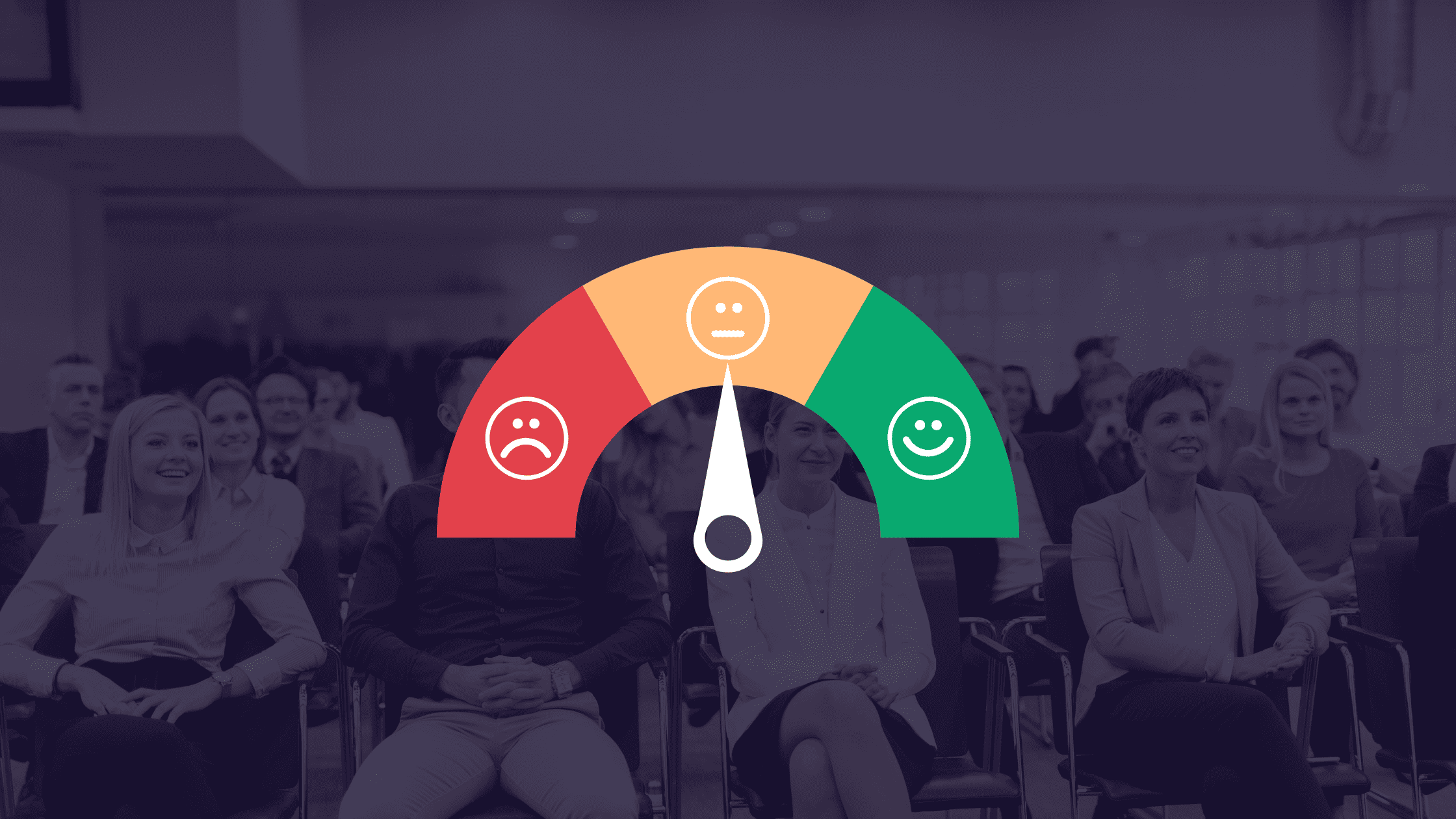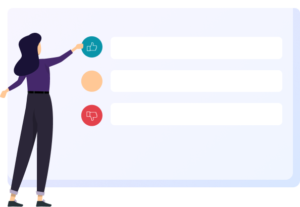11 Jan

How to measure audience engagement and sentiment at your event
Using smart tools to collect real-time feedback and measure audience engagement at any event is a must for modern event planners
Anyone who has hosted an event knows that ensuring a quality guest experience is near the top of your priority list. From weddings to corporate events to reunions, event planning is largely centered around how guests experience the event itself – and positive guest experiences are the key to future event attendance and success. While there are some obvious but inaccurate ways to measure how guests are enjoying an event (does everyone seem happy? Is the dance floor full? Did everyone on the list show up?), gathering real-time feedback from guests in the past was a challenge. You never want to interrupt guests during an event just to gather feedback on what they are enjoying and not enjoying so far.
Fortunately, modern technology has opened some exciting new doors for event hosts to connect with their guests and hear their suggestions, concerns, and positive feedback in real-time, without being intrusive. Measuring audience sentiment has become a natural and seamless part of the modern event experience, if you have the right tools to do so. But how does it work?

Why is measuring audience sentiment important?
Aside from knowing if all your hard work planning an event has paid off, there are actually quite a few reasons why being able to measure audience sentiment during the actual event is critical:
- If guests are experiencing difficulties with specific parts of the event (event registration, COVID safety protocols, food/beverage, and so on), real-time audience sentiment can allow you to identify these problems and make fixes on the fly. This means you can prevent a minor headache from becoming an event-defining problem.
- Real-time guest feedback allows you to pass along concerns or suggestions to your vendors. Even better, instead of causing friction by making suggestions they may not see the value in themselves, you can show your vendors actual guest feedback to demonstrate the need to make changes or fix issues.
- For major corporate events like conferences or whole-company meetings, real-time audience engagement analysis can also be used to gather attendee feedback at breakout sessions to give to presenters or panel hosts before their next session.
- While post-event feedback forms and surveys have long been employed to measure audience engagement and sentiment, there are a few issues with this method. Because these forms are shared after the event, you usually don’t capture sentiments as they happen. And secondly, many attendees may not choose to complete the feedback process, even with incentives provided to do so.
So how have modern audience sentiment tools fixed these issues?
The potential for measuring audience sentiment in 2022
Thanks to tools like Sentimently, there are now fantastic ways to measure audience likes and dislikes throughout your next event. Even better, audience engagement tools like this no longer require interrupting the guest experience. Instead, they offer modern takes on the methods used by companies like Nielsen and political campaigns for decades.

- Proactive audience sentiment measurements – while most people think of audience sentiment analysis as something that happens only during or after an event, the best event hosts realize that pre-surveying guests can let you proactively adjust event elements to maximize attendee experiences. Using quality audience engagement tools can let you connect with your audience and understand them better even before the event begins.
- Dial Testing 2.0 – much like sample audiences during a presidential debate, the best audience sentiment apps incorporate the “dial testing” method – having attendees rank certain elements of an event or their overall experience by rating in real-time on a positive to negative scale. Audiences continue to “adjust the dial” throughout the event, providing the event planner with a live graph that can illustrate swings in guest mood as they happen. This lets event planners identify and get to work on issues affecting audience experience at the moment they happen.
- Audience connectivity – aside from letting the audience know that their event host truly cares about their experience, audience reactions can also be shared with the guests themselves. This can let guests see if everyone had a similar positive or negative experience in a given breakout session or panel discussion at a conference, and allow guests to adjust their schedule accordingly, for example.
- Useful for in-person, virtual, and pre-recorded events alike – while COVID-19 has made hybrid events the new normal, the value of capturing audience sentiment doesn’t change, whether the event is in-person, virtual, or pre-recorded. In fact, being able to connect with attendees and measure their experience in a fully virtual format is perhaps even more important than in-person events, since tech issues and other logistical problems with remote guests are even more important to catch as soon as possible.
- Take the guesswork away from future event planning – most importantly for event planners, thanks to innovations in audience engagement tools, event planners no longer need to rely on hypothetical or unscientific observations to make changes for future events. While experienced event planners can generally judge the success or issues of a given event, audience sentiment dial-testing allows for actual data and metrics to support observations and guide event planning decisions. Not only will this help to increase positive audience experiences in the future, but money and time can be reinvested in future events in a way supported by actual attendee feedback,










Adam Hausman